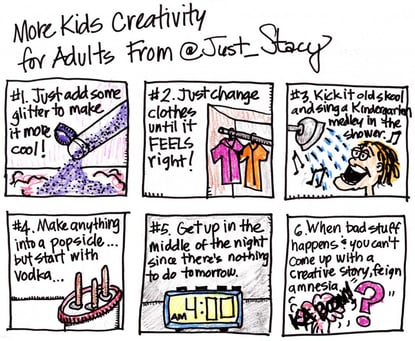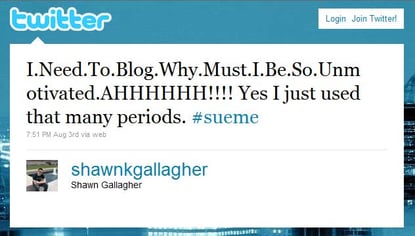The next few days' Brainzooming posts focus on creativity, including two by guest authors. Today's article is a follow-up to last Tuesday's post on The Beatles and how creative partnerships last or don't in music and elsewhere. This post is from Doug Stevenson ( MadCreative as he's known on Twitter), who I met via social media and had the opportunity to work with in-person on the BMAEngage social media team. Doug's an email subscriber to the blog and frequently sends me great comments. When this very thoughtful one arrived shortly after last Tuesday's post went out, he agreed to let me share it with everyone:
By Sgt. Pepper, or maybe even as early as "Revolver," the Beatles had begun going their own way creatively, composing and recording often separately on their collaborative albums. Although they stand on their own as classics in their own right, and hold up pretty well, by "Abbey Road" and "The White Album," the seams were showing. McCartney's and Lennon's first solo efforts reveal that they may have been holding back their best material to those ends.
I have always been a Who fanatic and think the B side of "Live at Leads" is right up there, and perhaps at the top of live rock recordings ever (with nods to the Stones' "Ya-Yas" and some Pink Floyd stuff). The Who has probably been more money-driven, but because I always thought of them more as a performance band (at one time anarchistic, iconoclastic and ground/instrument-breaking), I forgave their lack of creative productivity in their later years, contented to see them as satisfactory shadows of their former stage personas into which I infused more youthful images as my mind traveled back in time.
As for the creativity piece, a hiatus is often what works. Solo excursions both enliven creative juices and humble: you get an adrenaline boost of personal gratification AND a greater appreciation of the synergies you have as an ensemble/team/partner. Witness the renewed energy with which Neil Young periodically rejoins CS&N.
On an individual basis, often a rest, a run, a shower, a crossword work in the same way - a path out and time away to allow the brain's juices to percolate and new ideas to germinate. So, as to your point, I agree. As the show biz adage goes, "Always leave them wanting more." You gotta know when to call it quits - like Jim Brown or Sandy Koufax or a comedian knowing to hit the lights at the pinnacle of laughter.
Yet unlike athletes, musicians can rejoin collaborations, often with pleasant, if not groundbreaking results. The same is true for people pursuing any creative process. However, there is more "grist in the mill" in youth - the conditions for a creative cauldron are set there, as teen/young adult angst feeds the fire of creation. Once asked why so many of his songs were introspective or sullen, Paul Simon replied something like, "Well, when I'm happy I don't feel like writing."
Maybe another question worth answering is, "How might we create the conditions of angst - maybe alternatively - intense passion or urgency within ourselves to keep our creative flames fully fired?" - Doug Stevenson



